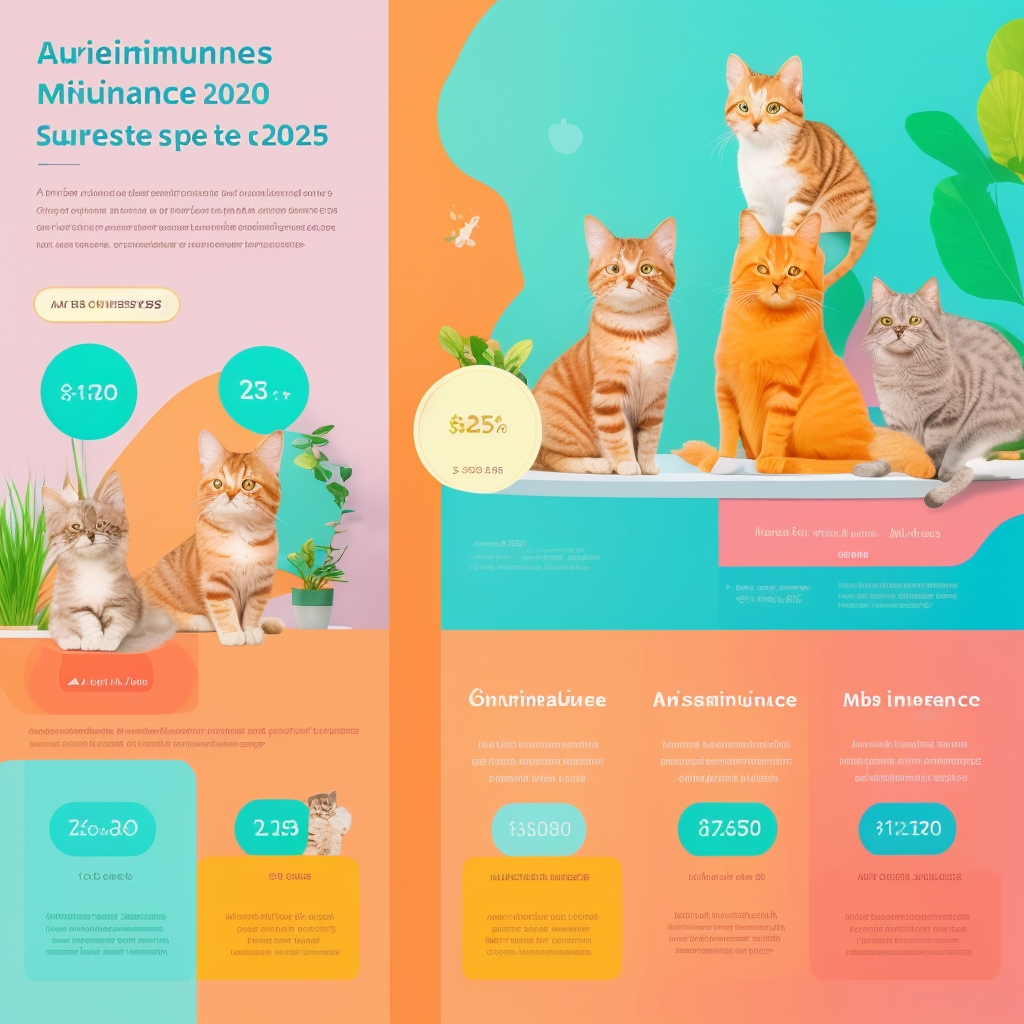Comparing Cat Insurance Policies: Your Essential Guide to Finding the Purr-fect Fit
Introduction
Choosing the right insurance policy for your beloved cat isn’t just another chore; it’s a pivotal decision that directly impacts your furry friend’s health and overall well-being. With a seemingly endless array of options flooding the market, knowing precisely what to look for can feel overwhelming. That’s why I’m here to walk you through the crucial elements to consider when comparing cat insurance policies, complete with practical examples to truly bring each point to life.
Why Is Cat Insurance Truly Necessary?
Before we dive deep into the nitty-gritty of policy comparison, let’s address the elephant in the room: why is cat insurance even necessary in the first place? Here’s the thing: veterinary fees can escalate surprisingly fast, especially when a serious illness or an unexpected accident strikes. For instance, emergency vet visits alone can range anywhere from $150 to over $10,000, depending on the severity and required treatment, with surgery often pushing costs into the thousands. Pet insurance isn’t just about covering these costs; it’s about empowering you to make the best possible care decisions for your cat without the crushing weight of financial worry. It’s about peace of mind, allowing you to focus on their recovery, not your budget.
What’s interesting is that the pet insurance market is booming, with the global market size valued at approximately $18.32 billion in 2024 and projected to reach over $48 billion by 2030. This growth, driven by rising veterinary costs and the increasing humanization of pets, underscores just how many pet parents are recognizing the value of this safety net.
Key Criteria for Comparing Cat Insurance Policies Like a Pro
1. Decoding Coverage Levels: What’s Really Covered?
When you’re comparing cat insurance policies, the very first thing you need to scrutinize is the level of coverage on offer. Think of it like a tiered system, each offering a different safety net:
- Basic Coverage: Generally, this covers the essentials: vet visits, vaccinations (though often as an add-on or wellness plan), and common illnesses. It’s your foundational protection.
- Intermediate Coverage: Stepping up, this might include everything in basic, plus dental care, specialized consultations, and treatments for more complex or chronic conditions.
- Premium Coverage: This is the comprehensive suite, often encompassing surgical procedures, behavioral care, and sometimes even preventive care.
Real-world insight: I’ve seen firsthand how a premium plan can be a lifesaver. If your cat, for example, develops a chronic illness like diabetes or kidney disease requiring long-term medication and ongoing specialist visits – which can easily run into thousands of dollars annually – premium coverage can genuinely save you from astronomical out-of-pocket expenses. This isn’t just theory; in 2024, the average yearly cost for comprehensive cat coverage was around $383 in the U.S., a small price for the potential for thousands in savings.
2. Unearthing Exclusions and Limitations: The Fine Print Matters
Every single insurance policy, without exception, comes with its own set of exclusions and limitations. It’s absolutely critical to roll up your sleeves and meticulously read the terms and conditions to grasp what’s covered and, more importantly, what isn’t. Common exclusions you’ll frequently encounter include:
- Pre-existing conditions: This is a big one. Most policies won’t cover health issues your cat had before you enrolled them.
- Cosmetic procedures: Think elective surgeries, not medically necessary ones.
- Routine care: Vaccinations, routine check-ups, and flea/tick prevention are often excluded from standard accident and illness plans, though wellness riders can be added.
- Behavioral issues: Unless directly linked to a diagnosed illness, treatments for anxiety or aggression might not be covered.
- Bilateral conditions: If a condition affects both sides of the body (e.g., hip dysplasia), and one side was pre-existing, the other side might be excluded too.
Expert tip: If your cat already has, say, a recurring ear infection or a known heart murmur, you must verify that the policy doesn’t exclude these specific pre-existing conditions from coverage. A surprising number of pet owners are unaware of these exclusions until it’s too late.
3. Understanding the Deductible Amount: Your Upfront Share
The deductible is simply the amount you’re responsible for paying out of your own pocket before the insurance company steps in to reimburse you. This figure can vary quite dramatically from one insurer to another, influencing your monthly premium.
- Fixed Deductible: A set, predefined amount you pay for each claim or annually.
- Variable Deductible: A percentage of the total cost of care.
Concrete example: Let’s say your cat needs a procedure costing $500. If your policy has a $100 fixed deductible, you’d pay that $100, and the insurer would then reimburse you for the remaining $400 (or a percentage of it, depending on your reimbursement rate). It’s a straightforward calculation, but one that can significantly impact your immediate out-of-pocket costs.
4. Navigating Reimbursement Ceilings: Know Your Limits
Insurance policies nearly always impose reimbursement ceilings, which is the maximum amount they’ll pay out per year, per incident, or over the lifetime of the policy. Missing this detail can lead to some truly frustrating surprises.
Use case: Imagine your cat requires a complex surgery that costs $2,000, but your policy has an annual reimbursement ceiling of $1,500. You’d be on the hook for the $500 difference, even if you’ve paid your deductible. This is why it’s crucial to select a ceiling that aligns with potential major veterinary expenses. In 2024, some individual claims for serious conditions like pancreatitis or intervertebral disc disease reached over $30,000, underscoring the need for high ceilings or unlimited coverage.
5. Demystifying Waiting Periods: Time is of the Essence
Waiting periods are those initial stretches of time, immediately after you purchase a policy, during which you cannot make a claim. These periods can differ based on the type of care (e.g., accidents typically have shorter waiting periods than illnesses) and the specific insurer.
Concrete example: If your cat has an accident just a week after you sign up for a new policy, and that policy has a 30-day waiting period for accidents, you unfortunately won’t be able to claim reimbursement until that period has passed. It’s a crucial detail that often catches new policyholders off guard.
6. Vetting the Insurer’s Reputation: Trust is Paramount
Before committing to any policy, I always advise doing your homework on the insurer’s reputation. This isn’t just about reading glossy brochures. Dive into customer reviews, scrutinize their customer service ratings, and check out independent online insurance rankings and comparison sites.
Use case: An insurer renowned for its responsive customer service and efficient claims processing can be an absolute godsend when you’re dealing with an urgent veterinary emergency. Knowing you can rely on them to quickly handle a reimbursement request during a stressful time is, in my opinion, priceless.
Key Points and Best Practices for a Seamless Choice
- Assess your cat’s unique needs: Before you even start comparing, take a moment to truly evaluate your cat’s individual profile. Consider their age, breed (some breeds are predisposed to certain conditions), and current health status. A young, healthy kitten might need different coverage than an older cat with a history of health issues.
- Compare multiple offers diligently: Don’t settle for the first quote you get. Leverage online insurance comparators to explore several options side-by-side and gather a range of quotes.
- Read the fine print meticulously: I can’t stress this enough. Those seemingly tedious terms and conditions are where crucial details about exclusions, limitations, and specific coverage nuances reside. Skipping them is a recipe for unpleasant surprises.
- Consult your veterinarian: Your vet is an invaluable resource. Discuss your cat’s specific health needs with them and ask for their recommendations on suitable insurance policies. They often have firsthand experience with how different providers handle claims and what types of coverage truly benefit their patients.
Conclusion
Comparing cat insurance policies might initially feel like navigating a maze, but by dedicating a little time to understanding these core criteria, you’ll be remarkably well-equipped to make an informed, confident choice. Remember, good pet insurance isn’t just a financial product; it offers the profound peace of mind needed to truly focus on your feline companion’s well-being, knowing you’re prepared for whatever life throws your way. By keeping key elements like coverage levels, exclusions, deductibles, and the insurer’s reputation firmly in mind, you’ll undoubtedly select the insurance that perfectly aligns with both your needs and, most importantly, your cat’s.
So, tell me, what are some of the specific health concerns or needs you have for your cat that you’d like to prioritize in an insurance plan?







